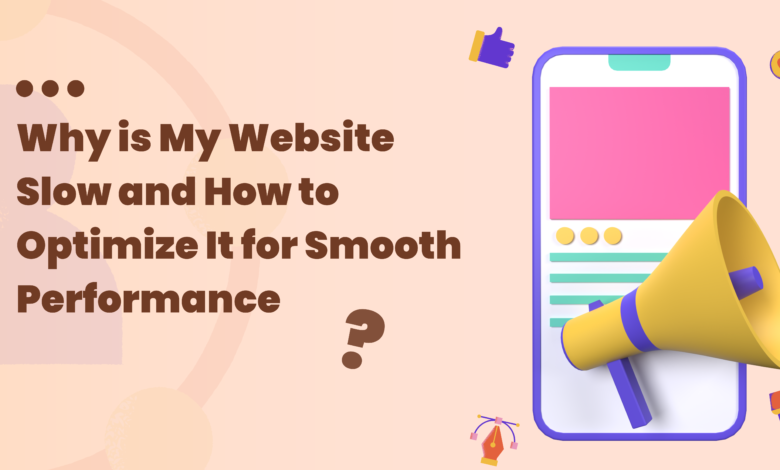
Introduction
A slow website can be frustrating for both visitors and site owners. It can lead to a poor user experience, lower search engine rankings, and decreased conversion rates. If you’re wondering why your website is slow, and how to make it run smoothly, this blog post will guide you through common reasons and effective solutions.
Choose the Right Hosting Provider:
- Hosting plays a critical role in website speed. Opt for a reliable hosting provider that offers the resources your website needs. Avoid shared hosting if your site experiences high traffic.
Optimize Images and Media:
- Large images and videos can significantly slow down your website. Use image compression and optimization tools to reduce file sizes without sacrificing quality.
Reduce HTTP Requests:
- Every element on a webpage requires an HTTP request. Minimize the number of requests by combining files and using CSS sprites for icons and images.
Optimize Code:
- Bloated or poorly coded HTML, CSS, and JavaScript can increase load times. Minify and compress your code to make it more efficient.
Implement Caching:
- Browser caching and server-side caching can speed up your website. Browser caching stores static files locally on visitors’ devices, while server-side caching reduces server load by serving cached content.
Content Delivery Network (CDN):
- A CDN distributes your website’s content across multiple servers globally, reducing latency and improving load times for visitors worldwide.
Database Optimization:
- Ensure your database is properly indexed and optimized to reduce the time required to fetch and display content.
Manage Plugins and Themes:
- If using a CMS like WordPress, deactivate and delete unnecessary plugins and themes. They can add unnecessary bulk and slow down your website.
Server Performance:
- Regularly monitor your server’s performance and consider upgrading hardware or using dedicated hosting if your site experiences high traffic.
Content Delivery Optimization:
- Implement techniques like lazy loading to load images and videos only when they become visible on the screen, reducing initial load times.
Mobile Optimization:
- Ensure your website is responsive and optimized for mobile devices. Slow mobile load times can negatively affect SEO and user experience.
Regular Updates:
- Keep your website’s software, plugins, and themes up to date to benefit from performance improvements and security fixes.
Testing and Monitoring:
- Use tools like Google PageSpeed Insights or GTmetrix to regularly test your website’s speed. Monitor your site’s performance and address issues promptly.
Content Optimization:
- Utilize a content delivery network (CDN) to distribute content geographically closer to your users, reducing latency. Optimize your content for search engines to improve load times and SEO.
Security Measures:
- Implement security measures to protect against DDoS attacks and other security threats that can slow down your website.
Prepare for Traffic Spikes:
- Choose a scalable hosting solution like cloud hosting to handle increased traffic without performance degradation during traffic spikes.
Conclusion:
Running a fast and efficient website is crucial for a positive user experience and business success. By addressing these common reasons for slow website performance and implementing the recommended solutions, you can ensure your website runs smoothly and keeps visitors engaged and satisfied. Regular maintenance and monitoring are key to long-term success in website optimization.





